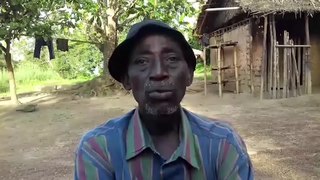
The Biu–Mandara or Central Chadic languages of the Afro-Asiatic family are spoken in Nigeria, Chad and Cameroon.
The Indi language or Mag-indi is a Sambalic language with around 5,000 speakers. It is spoken within Philippine Aeta communities in San Marcelino, Zambales, and in the Pampango municipalities of Floridablanca and Porac. There are also speakers in Lumibao and Maague-ague.
The Loun language is an extinct Austronesian language once spoken in Indonesia, mainly in the Maluku archipelago.
Kol is a Niger–Congo language of the Bantu family, associated with the Bikélé ethnic group. It is spoken in the East Province of Cameroon, in the vicinity of Messaména. Alternate names for Kol language include Bikele-Bikay, Bikele-Bikeng, Bikélé, and Bekol.

Margi, also known as Marghi and Marghi Central, is a Chadic language spoken in Nigeria, Cameroon, and Chad. It is perhaps the best described of the Biu–Mandara branch of that family. Marghi South language and Putai are closely related and sometimes considered dialects of Margi.
Fayu, also known as Sehudate, is a Lakes Plain language of Papua Province, Indonesia spoken by about 1,400 Fayu people. It is spoken in Foida and other nearby villages.
The Dii language is a dialect cluster in the Duru branch of Savanna languages. Yag Dii is the ethnonym.

Konobo, or Eastern Krahn, is a Kru language of Liberia.
Buyu, or Buyi, is a Bantu language of Lake Tanganyika that is closely related to Nyanga.
Marghi South is a Chadic language of Nigeria. It is perhaps closer to Huba than it is to Margi.
Sabüm is an aboriginal Aslian language of Malaya, extinct as of 2013.
Mondé, or Salamãi, is a possibly extinct Tupian language of the state of Rondônia, in the Amazon region of Brazil.

Waimajã (Waimaha), generically known as Bará or (Northern) Barasano, is a Tucanoan language of Colombia and Brazil. As of 1971, the population of speakers generally lived along the rivers of Colombia, namely, Colorado, Yapu, Inambu, Macucu, and Tiquie.
Lewotobi is either a separate Central Malayo-Polynesian language or dialect of Lamaholot of Flores island in Indonesia. It is presented as a separate language by Ethnologue and Grimes (1997). Nagaya (2011), in his description of Lewotobi, disputes this, classifying it instead as a dialect of Lamaholot.
The Komodo language is a language spoken by the extinct Komodo people, and present day inhabitants of Komodo Island, with a small population of speakers on mainland Flores. It belongs to the Austronesian language family, and is a separate language from Manggarai.
Zokhuo, also known as Niuweiba (Cowtail) Phula, is a Loloish language spoken by the Phula people of China. It appears to be the Chökö (Tśökö) of Vietnam.
Arhö is a moribund Oceanic language of New Caledonia. In 2000, there were only 10 speakers of the language.
Aribwaung (Aribwaungg), also known as Yalu (Jaloc), is an Austronesian language of Morobe Province, Papua New Guinea. It is spoken in the single village of Yalu in Wampar Rural LLG.
Bieria, or Vovo (Wowo), is an Oceanic language spoken on Epi Island, in Vanuatu.
Bierebo, or Bonkovia-Yevali, is an Oceanic language spoken on Epi Island, in Vanuatu.




